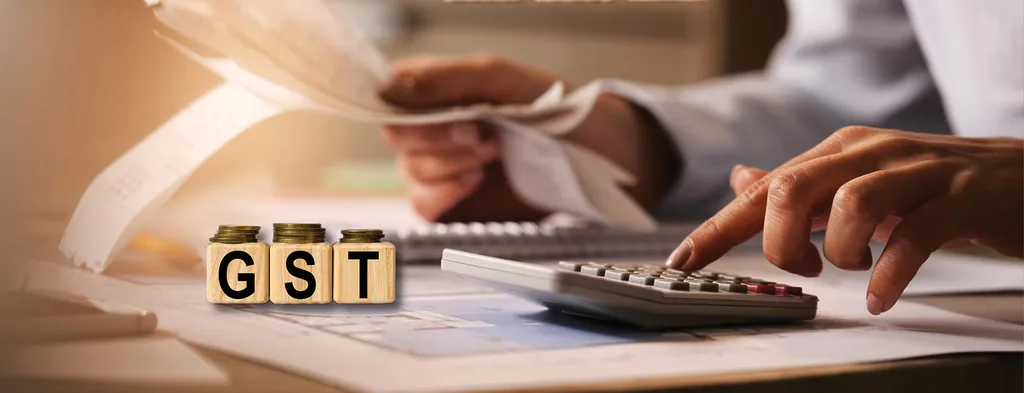Table of contents
The Goods and Services Tax (GST) is a comprehensive, multi-stage, destination-based tax levied on every value addition. It replaced a multitude of indirect taxes in India, aiming to simplify the tax structure and create a unified national market. However, understanding the intricacies of GST requires a grasp of its various components. This comprehensive guide will delve into the different types of GST, explaining their application, purpose, and impact on businesses and consumers, drawing insights from resources like Kotak.com.
The Four Pillars: Understanding the Types of GST

The GST framework in India comprises four primary types of taxes, each designed to address specific types of transactions:
- Central Goods and Services Tax (CGST):
- State Goods and Services Tax (SGST):
- Integrated Goods and Services Tax (IGST):
- Union Territory Goods and Services Tax (UTGST):
Let’s examine each of these in detail:
1. Central Goods and Services Tax (CGST): The Union’s Share
CGST is levied by the Central Government on the intra-state supply of goods and services. This means that when a transaction occurs within the same state (e.g., a manufacturer in Karnataka selling goods to a retailer in Karnataka), the Central Government collects CGST on that sale. The revenue collected under CGST goes to the Central Government.
- Key Characteristics of CGST:
- Levied on intra-state supplies (transactions within the same state).
- Collected by the Central Government.
- The rate of CGST is usually equal to the SGST rate (combined, they make up the total GST rate for intra-state transactions).
- Governed by the Central Goods and Services Tax Act, 2017.
2. State Goods and Services Tax (SGST): The State’s Revenue
SGST is levied by the State Government on the intra-state supply of goods and services. In the same scenario as above (a transaction within Karnataka), the Karnataka State Government would collect SGST. The revenue collected under SGST goes to the respective State Government.
- Key Characteristics of SGST:
- Levied on intra-state supplies (transactions within the same state).
- Collected by the State Government.
- The rate of SGST is usually equal to the CGST rate.
- Governed by the State Goods and Services Tax Act of each respective state.
The Combined Effect of CGST and SGST:
It’s crucial to understand that CGST and SGST work in tandem. For any intra-state transaction, both CGST and SGST are applicable. The GST rate for a particular good or service is divided between the Central Government (CGST) and the State Government (SGST). For example, if the GST rate on a product is 12%, it’s typically split as 6% CGST and 6% SGST.
3. Integrated Goods and Services Tax (IGST): Facilitating Inter-State Trade
IGST is levied by the Central Government on the inter-state supply of goods and services. This means when a transaction occurs between two different states (e.g., a manufacturer in Karnataka selling goods to a retailer in Tamil Nadu), IGST is applicable. The revenue collected under IGST is initially collected by the Central Government but is later apportioned between the Centre and the destination state.
- Key Characteristics of IGST:
- Levied on inter-state supplies (transactions between different states).
- Collected by the Central Government.
- The IGST rate is usually the sum of the CGST and SGST rates that would have been applicable if the transaction had occurred within a single state.
- Governed by the Integrated Goods and Services Tax Act, 2017.
Why IGST is Necessary
IGST simplifies inter-state trade. Instead of dealing with different SGST laws and rates in each state, businesses pay IGST to the Central Government. This ensures a seamless flow of taxes and avoids complexities. The Central Government then apportions the appropriate share of the IGST revenue to the destination state (the state where the goods or services are ultimately consumed).
💡 Pro Tip: If you want to start a business but have too many doubts, connect with a food business expert from Boss Wallah for guidance – https://bw1.in/1116
4. Union Territory Goods and Services Tax (UTGST): For Union Territories
UTGST is similar to SGST but applies to India’s Union Territories (UTs) that do not have their own legislatures. These UTs are:
- Andaman and Nicobar Islands
- Lakshadweep
- Dadra and Nagar Haveli and Daman and Diu
- Chandigarh
For intra-state supplies within these UTs, UTGST is levied along with CGST. The revenue collected under UTGST goes to the respective Union Territory’s administration.
- Key Characteristics of UTGST:
- Levied on intra-UT supplies (transactions within the specified Union Territories).
- Collected by the Union Territory’s administration.
- The rate of UTGST is usually equal to the CGST rate.
- Governed by the Union Territory Goods and Services Tax Act, 2017.
GST on Imports:
For goods imported into India, IGST is levied along with any applicable customs duties. This ensures a level playing field between domestic and imported goods.
A Summary Table

| Type of GST | Levied By | Applicable On | Revenue Goes To |
| CGST | Central Government | Intra-state supplies (within the same state) | Central Government |
| SGST | State Government | Intra-state supplies (within the same state) | Respective State Government |
| IGST | Central Government | Inter-state supplies (between different states) | Initially Central Government, then apportioned between Centre and destination State |
| UTGST | UT Administration | Intra-UT supplies (within specified Union Territories) | Respective Union Territory Administration |
Need Expert Guidance?
Starting a business can be challenging, but you don’t have to do it alone! At Boss Wallah, our 2,000+ business experts are ready to provide valuable insights and guidance. Whether you need help with marketing, finance, sourcing, or any other area of any business, our business experts are here to help you succeed- https://bw1.in/1116
Confused about Which Business to Start?
Want to start your own business but unsure which one to choose? Explore Boss Wallah, where you’ll find 500+ courses by successful business owners, featuring practical, step-by-step guides on starting and growing various businesses.
Find your perfect business idea today – https://bw1.in/1111
Conclusion
Understanding the different types of GST is fundamental for businesses operating in India. CGST, SGST, IGST, and UTGST work in a coordinated manner to ensure a smooth and efficient tax collection system across the country. By correctly applying the appropriate type of GST based on the nature and location of the transaction, businesses can maintain compliance, avoid penalties, and contribute to the overall effectiveness of the GST regime.
FAQs
- What is the difference between CGST and SGST?
- CGST is collected by the Central Government, and SGST is collected by the State Government, both on intra-state supplies.
- When is IGST applicable?
- IGST is applicable to all inter-state supplies (transactions between different states) and on imports.
- What is UTGST?
- UTGST is similar to SGST but applies to specific Union Territories in India that do not have their own legislatures.
- How are GST rates determined?
- GST rates are determined by the GST Council, a body comprising representatives from both the Central and State Governments.
- Does GST apply to all goods and services?
- No, some goods and services are exempt from GST.
- How does the Input Tax Credit (ITC) mechanism work with the different types of GST?
- ITC allows businesses to claim credit for the GST they have paid on their purchases, which can be used to offset their GST liability on sales. The rules for claiming ITC can be complex, especially with inter-state transactions involving IGST.
- What are the benefits of the IGST system?
- IGST simplifies inter-state trade, avoids the cascading effect of taxes, and ensures that the tax revenue ultimately goes to the state where the goods or services are consumed.
- Where can I find the applicable GST rate for a specific product or service?
- GST rates are notified by the government and can be found on the CBIC (Central Board of Indirect Taxes and Customs) website and other official sources.


